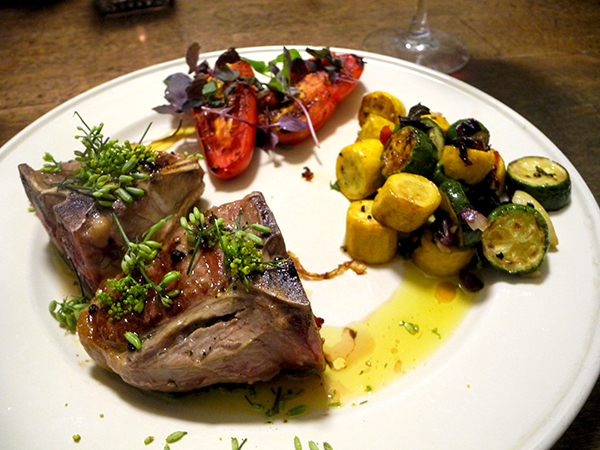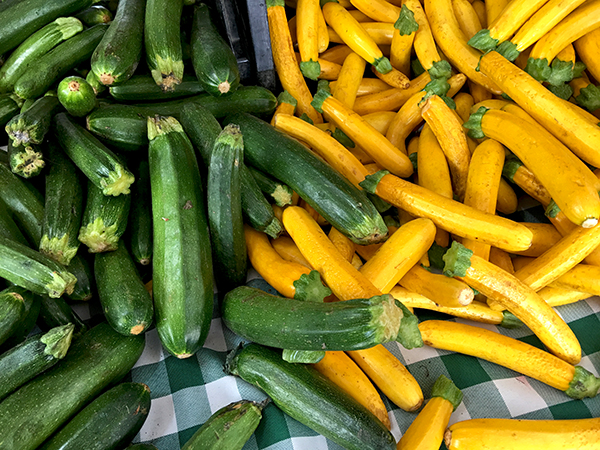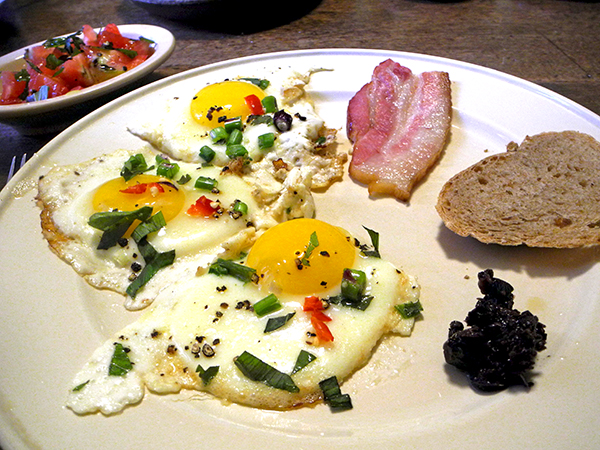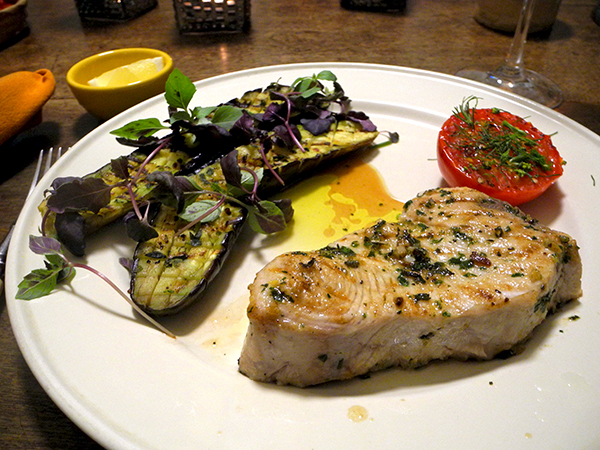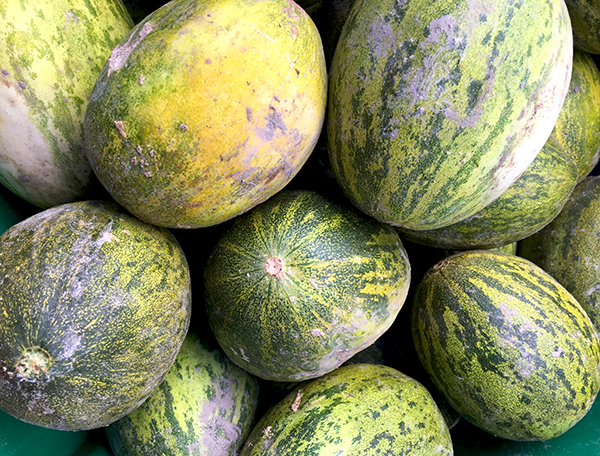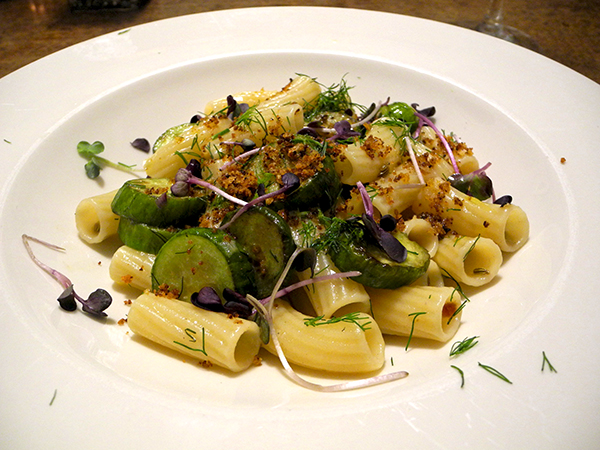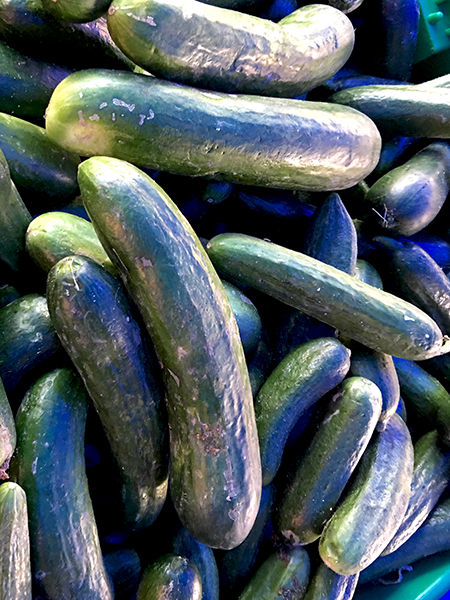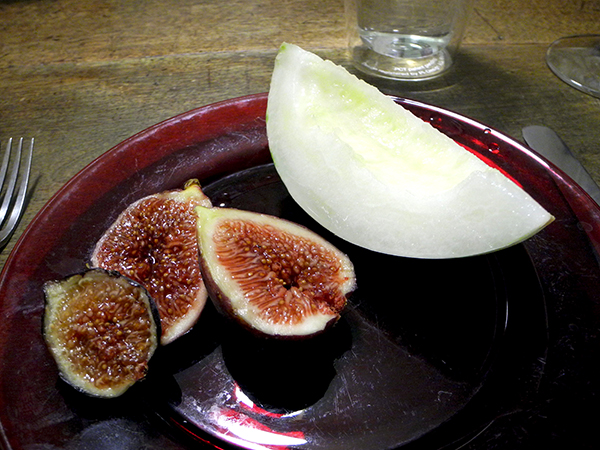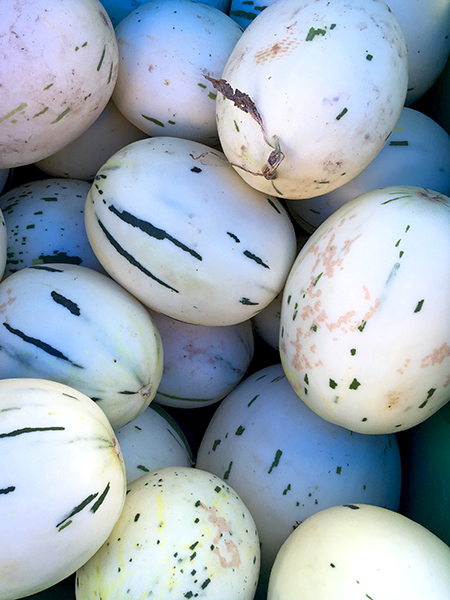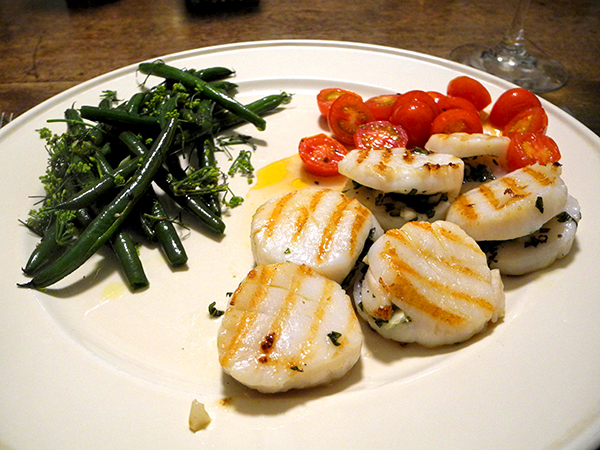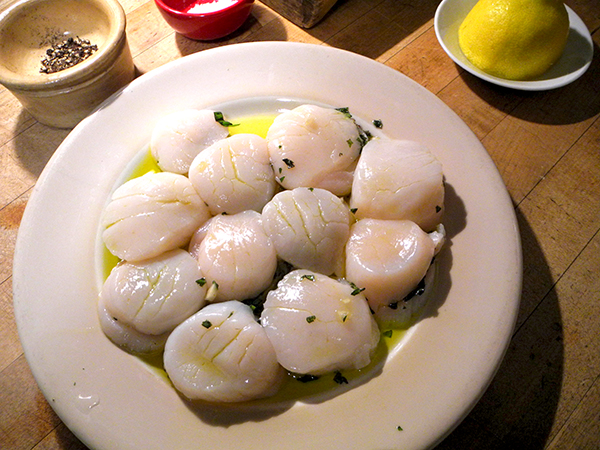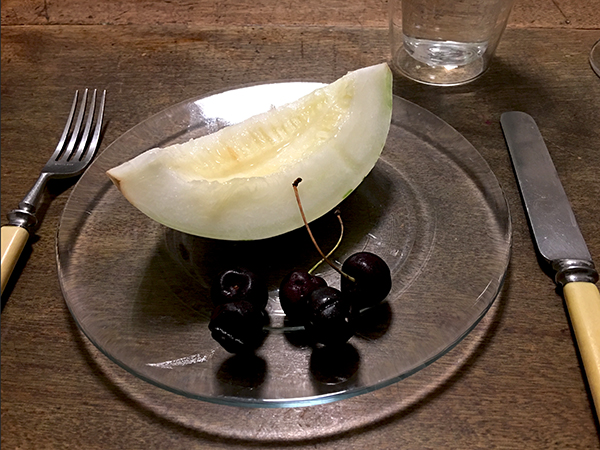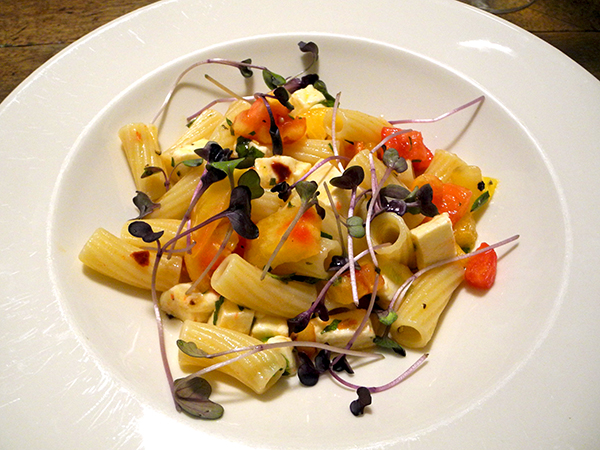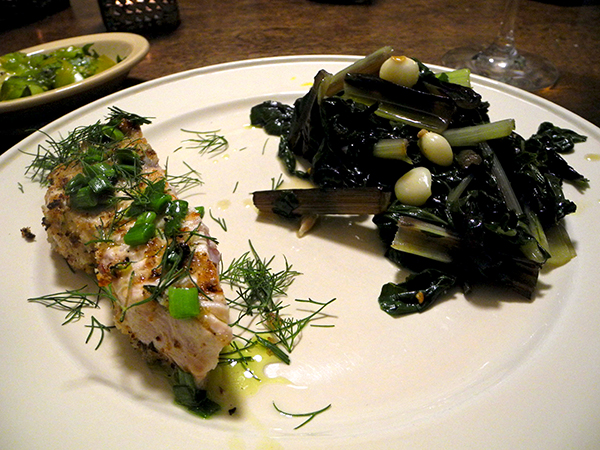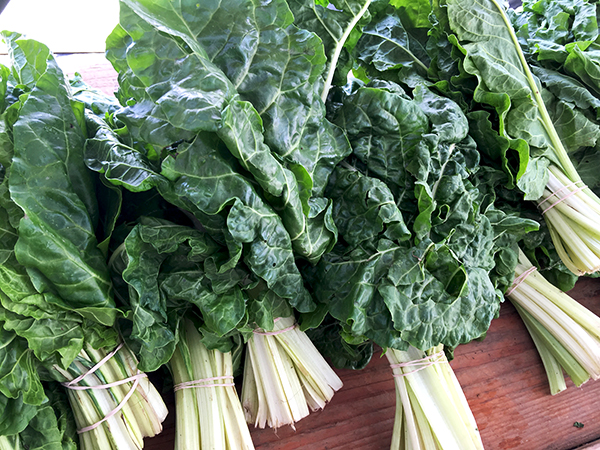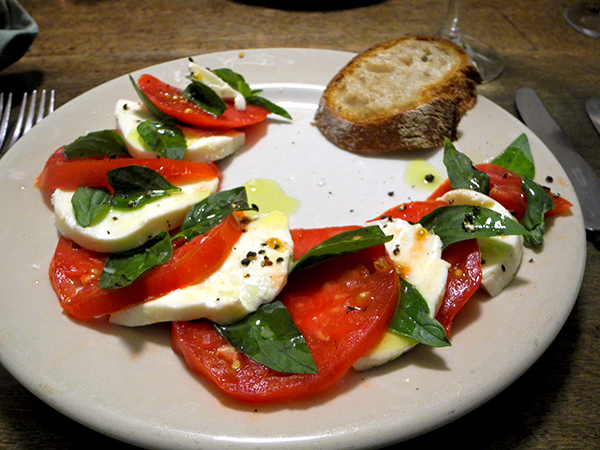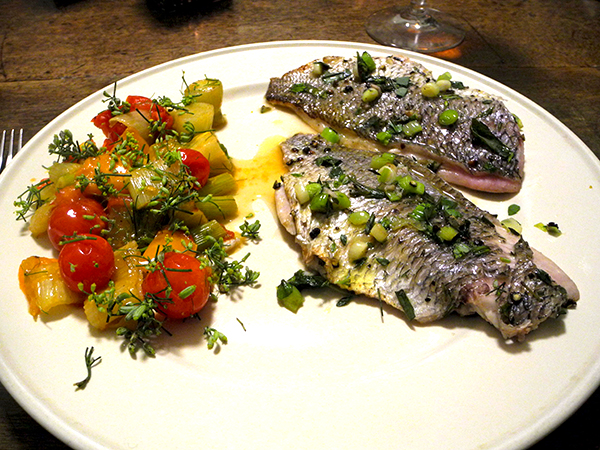
Before I headed out to the Greenmarket on Monday I had noticed that the tomatoes on the windowsill were beginning to gang up on me. I decided I had to incorporate most of them in the entrée that night.
After earlier purchasing 4 porgy fillets, I picked up a young fennel bulb, thinking I would incorporate it in the preparation of the fish. That evening I realized I should probably use the oven to do that best, so I ended up combining the fennel with the tomatoes in a sauté, or braise.
- four 4-ounce Porgy fillets from P.E. & D.D. Seafood, dried, seasoned with salt and pepper, pan-seared, along with 3 thinly-sliced very small French leeks from Mountain Sweet Berry Farm Farm, over medium heat inside an oval copper pan in a bit of butter and a little olive oil, the fish basted, more or less continually, using a small brush, with the the leeks, butter and oil for about 2 minutes, the fish then carefully turned over, the heat reduced to low, a cover (I used aluminum foil) placed on the pan and the filets cooked for about another minute before the cover was removed and 2 or 3 tablespoons of mixed fresh herbs thrown in (I used mint, lovage, savory, thyme, tarragon, and basil this time), after which the basting was continued for about another 2 minutes, or until the fish was cooked through, at which time the fillets were arranged on the 2 plates, and the juices and leek fragments (there was very little) scooped up and sprinkled on top (the recipe has been slightly modified from one written by Melissa Clark)
- one young fennel bulb from Norwich Meadows Farm, cut into pieces half an inch to an inch in size, sautéed in a little olive oil inside a heavy cast iron enameled pan along with 3 thickly-sliced garlic cloves and a small amount of very-thinly-sliced ‘cherry bomb’ [or ‘red bomb’] pepper, both garlic and capsicum also from Norwich Meadows Farm, removed from the heat once the fennel had begun to caramelize, then tossed with 2 chopped heirloom tomatoes (one yellow-orange, one red) from Down Home Acres, and a dozen slightly-punctured ‘The Best Cherry Tomatoes’ (red) from Stokes Farm, stirring until all was mixed together, lemon juice squeezed in, and chopped fennel fronds added, the vegetables divided on the plates and sprinkled with fennel flowers from Mountain Sweet Berry Farm
- the wine was a French (provence) rosé, Chateau de Trinquevedel AOP Tavel 2015, whose wine merchant here is Kermit Lynch
- the music was an album of symphonies of Johann Wilhelm Wilms, Anthony Halstead
conducting the Netherlands Radio Chamber Orchestra
